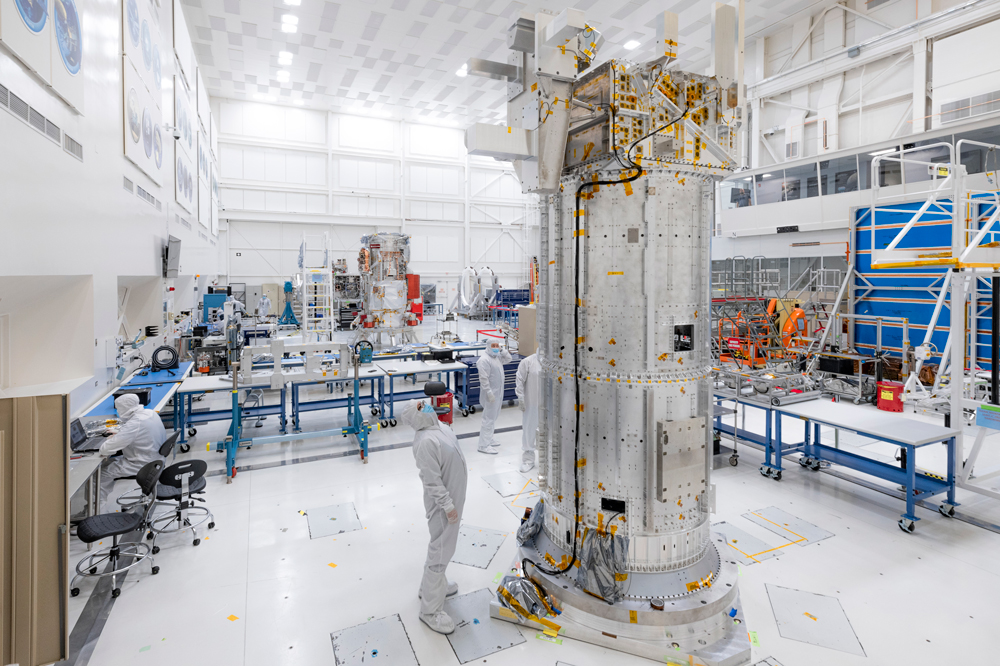All Resources
Europa Clipper's Developmental Test Model

To ensure NASA’s Europa Clipper spacecraft can withstand the physical stresses of launch and hundreds of millions of miles of space travel, an engineering team is testing a full-size copy of the spacecraft’s central structure at NASA’s Jet Propulsion Laboratory (JPL), in southern California. The duplicate spacecraft is called the developmental test model. In this image, the test model is visible in JPL’s High Bay 1 cleanroom (front), the same room where Europa Clipper’s flight model's main body and avionics module are being assembled (back).
While engineers are currently assembling the flight model’s main body and avionics module, the test model will be undergoing modal testing. During modal testing, the test model will be excited with shakers and the spacecraft’s dynamic response measured. The test model was moved to High Bay 1 because JPL’s largest “seismic mass” lives in the corner of the high bay. The seismic mass is a 1.16 million-pound concrete block set into the floor of the facility. During modal testing, engineers will bolt the test model to the seismic mass. The modal test will help verify the team’s analytical spacecraft models, helping engineers ensure that the Europa Clipper spacecraft will handle launch.


